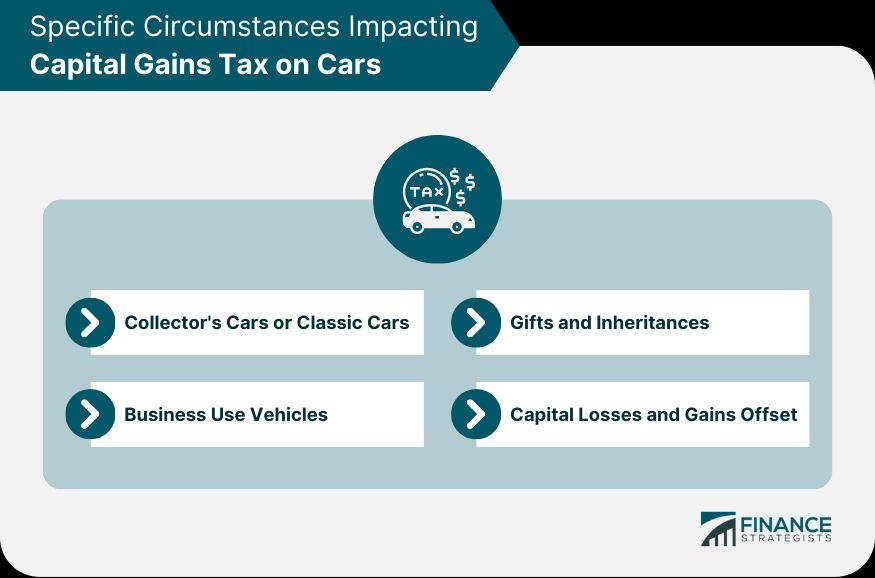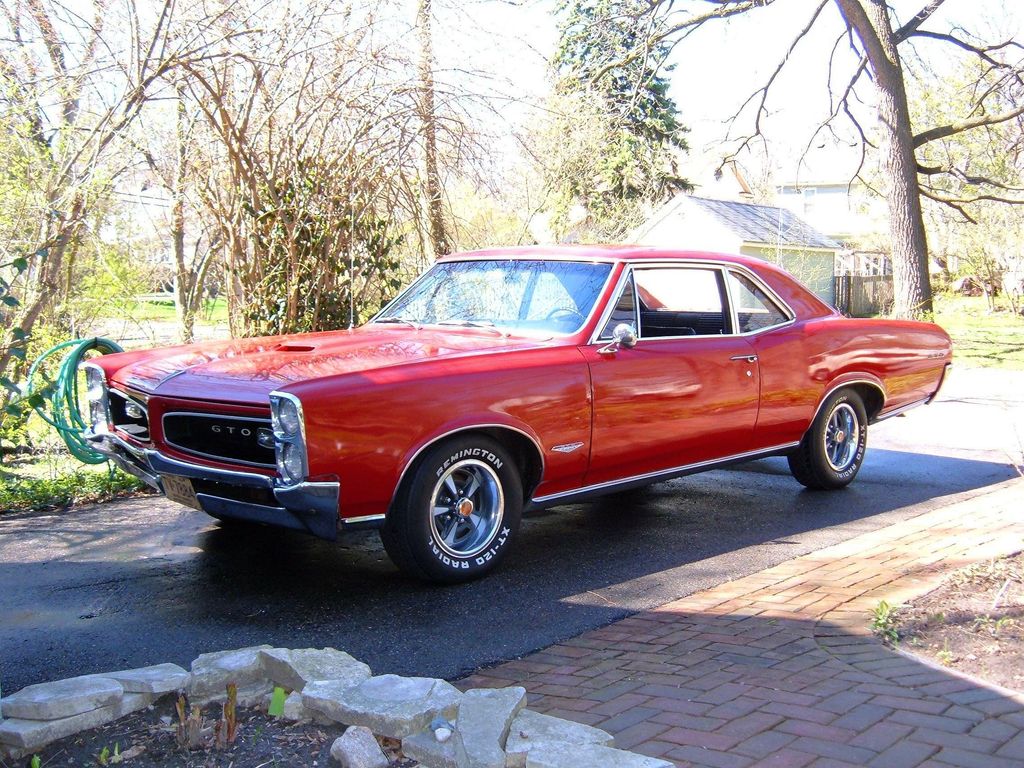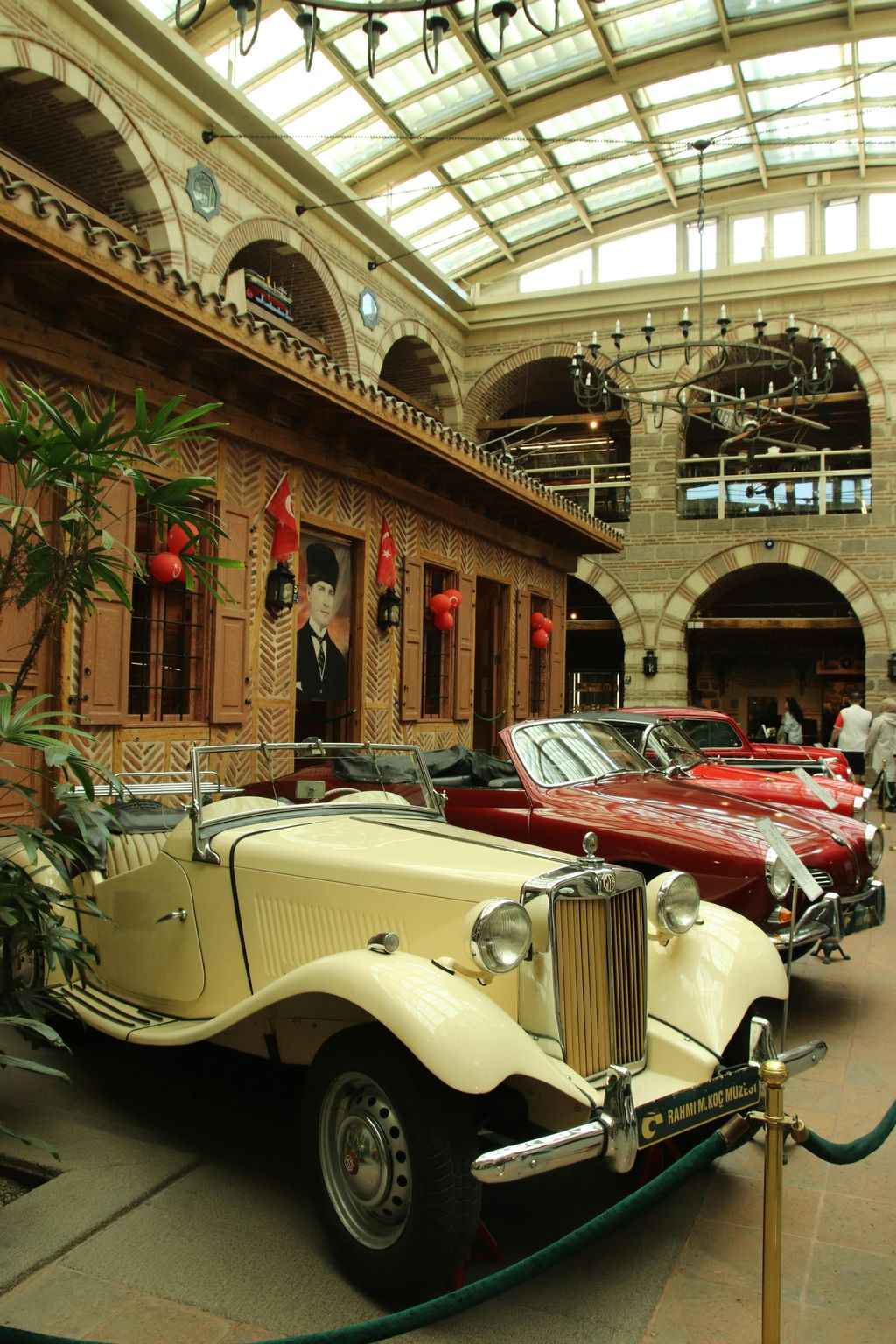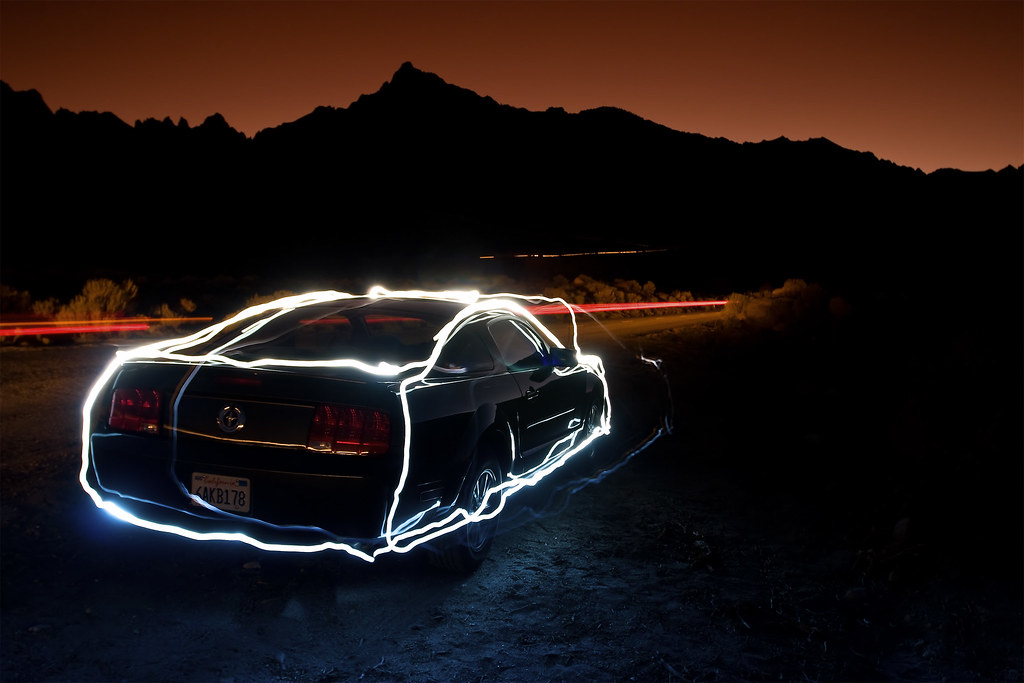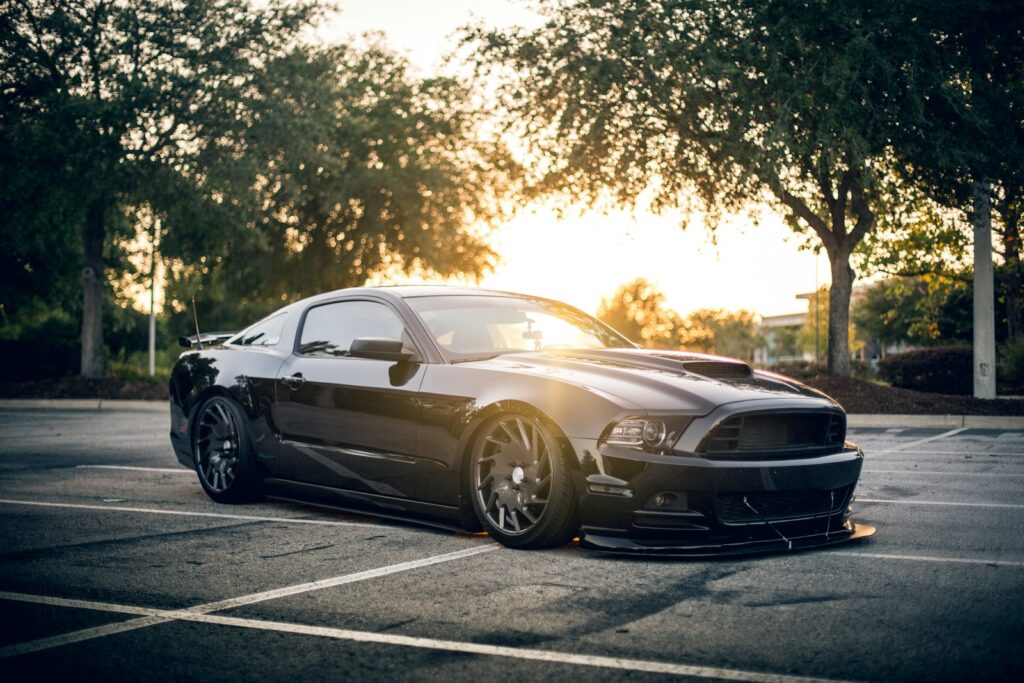
The collector car market, a realm long characterized by passion and prestige, is currently navigating a significant reevaluation. For years, we witnessed an unchecked ascent, with values for both classic cars and modern collectibles reaching incredible heights, fueled by unique circumstances. Many enthusiasts watched their dream rides become unaffordable, as it seemed prices would never come back down. Now, the landscape has shifted, and a palpable sense of apprehension permeates the community, with many fearing “the party’s over” as investors scramble to unload assets.
Evidence of this market realignment is appearing all around us, from “NASCAR hero Don Tarr’s ’69 Dodge Charger Daytona failing to meet reserve at auction” to dealers “struggling to sell C8 Z06 Corvettes.” Even Hagerty, a leading voice in classic car insurance, is “wondering just how low its Market Rating will sink before things stabilize again.” This rating, which gauges market activity, hit 60 back in April – a first in almost five years – after reaching a pinnacle of 78.22 in June 2022. This complex scenario presents both challenges and unique opportunities for those with a keen eye for automotive history.
Yet, despite anxieties surrounding a potential “rapidly collapsing” market, the narrative is far from a death knell. Instead, it suggests a profound “rebalancing,” as McKeel Hagerty, CEO and chairman, describes it. While “roughly flat to a little bit down,” it is not the precipitous 22 percent decrease seen from 2022 to 2023. This realignment, as Rupert Banner of Gooding & Company suggests, means “buyers have retaken control over how prices are dictated,” a healthy evolution welcoming “a lot of new buyers.” These new enthusiasts are “migrating towards cars that are easiest for them to understand or relate to,” specifically “the cars that they aspired to in the last 15 to 20 years as they developed their wealth.” Even in a fluctuating market, certain models stand out, promising both a rewarding ownership experience and a sound investment. Let’s delve into some of these remarkable vehicles identified by Hagerty’s experts.
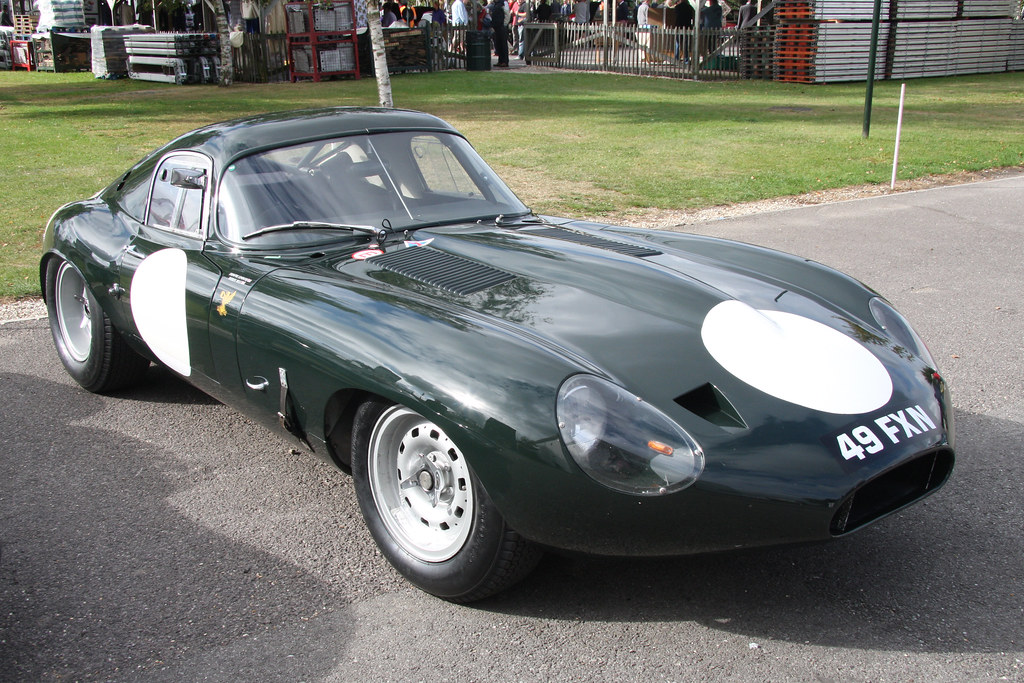
1. **1961-1964 Jaguar E-Type SI 3.8 Coupe ($182,800)**Few cars encapsulate the essence of classic motoring quite like the Jaguar E-Type Series I 3.8 Coupe. This magnificent machine was instrumental in forging the Jaguar brand’s sterling reputation in the United States during the 1960s. Its “classic styling that featured a block-long hood” was utterly distinctive, an automotive sculpture that commanded attention wherever it went. Beyond aesthetics, the E-Type delivered a thrilling driving experience, powered by its “smooth V6 performance,” providing both power and refinement. This combination cemented its status as an icon, beloved by enthusiasts and collectors alike.
The desirability of the E-Type has remained consistently high, a true testament to its timeless design and historical significance. While its current average value of $182,800 places it firmly in the upper echelons, Hagerty notes an interesting trend: over the past three years, E-Types from this era have seen a slight decrease in value. Far from being negative, this dip has only made them “more desirable to a new generation of well-heeled enthusiasts,” creating an intriguing entry point for serious collectors recognizing long-term appreciation potential.
The allure of the E-Type extends beyond mere financial investment; it is an investment in a piece of automotive art and history. Its impact on design and performance cannot be overstated. For those who appreciate meticulous craftsmanship and the raw driving experience of a true vintage thoroughbred, the Series I E-Type 3.8 Coupe represents an almost irresistible proposition. Its continued presence on Hagerty’s Bull Market list underscores its enduring legacy and anticipated growth among discerning collectors.
Car Model Information: 1971 Jaguar E-Type Restomod
Sp: uk
Name: Jaguar E-Type
Caption: 1961 E-Type Series 1 3.8-Litre, the first production model of this open two-seater
Aka: Jaguar XK-E (North America),Jaguar V-12
Manufacturer: Jaguar Cars
Production: 1961–1974
Class: Sports car
Predecessor: Jaguar XK150
Related: Jaguar D-Type,Jaguar XJ13
Successor: Jaguar XJS
Layout: FMR layout
Assembly: Coventry,England
Designer: Malcolm Sayer
Categories: 1970s cars, 2+2 coupés, All Wikipedia articles written in British English, All articles with dead external links, All articles with specifically marked weasel-worded phrases
Summary: The Jaguar E-Type, or the Jaguar XK-E for the North American market, is a British front mid-engined sports car that was manufactured by Jaguar Cars Ltd from 1961 to 1974. Its sleek appearance, advanced technologies, high performance, and competitive pricing established it as an icon. The E-Type’s claimed 150 miles per hour (240 km/h) top speed, sub-7-second 0 to 60 mph (97 km/h) acceleration, largely unitary body construction, front and rear independent suspension with disc brakes, mounted inboard at the rear, and rack-and-pinion steering spurred industry-wide changes.
The E-Type was based on Jaguar’s D-Type racing car, which had won the 24 Hours of Le Mans for three consecutive years beginning in 1955.
The E-Type employed what was, for the early 1960s, a novel design principle, with a front subframe carrying the engine, front suspension and front bodywork bolted directly to the body tub. No ladder frame chassis, as was common at the time, was needed and as such the first cars weighed only 1,315 kg (2,899 lb).
It is rumored that, on its debut on 15 March 1961, Enzo Ferrari called it “the most beautiful car ever made”, but this statement is not fully confirmed. In 2004, Sports Car International magazine placed the E-Type at number one on their list of Top Sports Cars of the 1960s. In March 2008, the Jaguar E-Type ranked first in The Daily Telegraph’s online list of the world’s “100 most beautiful cars” of all time.
Get more information about: Jaguar E-Type
Buying a high-performing used car >>>
Brand: Jaguar Model: E-Type
Price: $64,900 Mileage: 2,455 mi.

2. **2003-2013 Lamborghini Gallardo 6-Speed ($157,700)**Stepping forward in time, the 2003-2013 Lamborghini Gallardo 6-Speed emerges as another compelling contender in the evolving collector car market. There are “few cars as unmistakably styled as this wedge-shaped Lambo,” a design that immediately communicates power, aggression, and Italian flair. Its visual impact is undeniable, making it an instant head-turner and a modern classic. But the Gallardo’s appeal isn’t just skin deep; beneath its striking exterior lies a “red-hot V10 engine,” delivering intoxicating performance. This combination of dramatic styling and high-octane engineering makes it a truly visceral driving machine.
A crucial detail for collectors seeking future appreciation lies in the transmission choice. While “an automatic gearbox was the standard transmission,” the “six-speed manual was optional for purists.” It is this manual version that Hagerty specifically highlights as “the version to find for future appreciation.” The tactile engagement and unadulterated control offered by a manual transmission are increasingly rare in modern performance cars, making these specific Gallardos highly sought after by enthusiasts who value a more direct driving experience. This often translates into stronger long-term value.
Despite its current average value of $157,700, Hagerty points out that “Gallardo prices have notched up by a mere 9% over the past five years.” This appreciation “lags behind other Lamborghinis during the same period,” positioning them as “relative bargains, even at this astronomical average value.” For astute collectors, this presents a unique opportunity to acquire a legendary supercar at what could be considered an undervaluation compared to its stablemates. It’s a chance to own a piece of Lamborghini’s storied history, embodying a blend of aggressive design, powerful performance, and the coveted manual gearbox, all elements signaling strong growth potential.
Car Model Information: 2006 Lamborghini Gallardo SE
Name: Lamborghini Gallardo
Caption: 2008–2013 Lamborghini Gallardo Superleggera
Manufacturer: Lamborghini
Production: 2003–2013
Assembly: Sant’Agata Bolognese
Designer: Italdesign,Luc Donckerwolke,Walter de Silva
Class: Sports car
BodyStyle: coupé
Related: Audi R8 (Type 42)
Layout: Longitudinal engine,Rear mid-engine, rear-wheel-drive layout
Engine: Lamborghini V10,5.2 L Lamborghini odd firing V10 (facelift)
Transmission: Graziano Trasmissioni,Manual transmission
Wheelbase: 2560 mm
Abbr: on
Length: convert
Width: 1900 mm
Height: Coupé: {{convert,1165,mm,in,1,abbr=on
Weight: LP 560-4: {{convert,3310,lb,kg,0,abbr=on,order=flip
Order: flip
Sp: uk
Predecessor: Lamborghini Jalpa
Successor: Lamborghini Huracán
Categories: 2010s cars, All articles with dead external links, All articles with unsourced statements, Articles with dead external links from March 2017, Articles with hAudio microformats
Summary: The Lamborghini Gallardo (; Spanish: [ɡaˈʎaɾðo]) is a sports car built by the Italian automotive manufacturer Lamborghini from 2003 to 2013. It is Lamborghini’s second car released under parent company Audi, and the best-selling model at the time with 14,022 built throughout its production run. Named after a famous breed of fighting bull, the V10 powered Gallardo has been Lamborghini’s sales leader and stable-mate to a succession of V12 flagship models—first to the Murciélago (4,099 built between 2001 and 2010), then to the Aventador, being the first entry-level Lamborghini in one-and-half decades. On 25 November 2013, the last Gallardo was rolled off the production line. The Gallardo was replaced by the Huracán in 2014.
Get more information about: Lamborghini Gallardo
Buying a high-performing used car >>>
Brand: Lamborghini Model: Gallardo
Price: $89,000 Mileage: 26,493 mi.

3. **1981-1983 DeLorean DMC-12 ($75,100)**Few cars evoke as much nostalgic resonance as the 1981-1983 DeLorean DMC-12. Its iconic status was “cemented” by its starring role in “the three Back to the Future films,” transforming it into a bona fide “pop-culture icon.” But the DeLorean’s story runs deeper than its cinematic fame. It’s a vehicle shrouded in “enough intrigue-filled backstory” to captivate anyone, a narrative that truly “fill volumes.” From its distinctive “aluminum-bodied gullwing-door” design to its brief, tumultuous production history, the DMC-12 is a car unlike any other, embodying a unique blend of ambition and innovation.
While it “never was much of a high-performance car” in the traditional sense, its visual identity and surrounding narrative have always been its strongest assets. The “rise in 1980’s nostalgia has generated heightened interest in the low-slung Irish-built DMC-12,” appealing to a generation that grew up with its image. This cultural cachet has had a tangible effect on its market value. Hagerty reports that the DMC-12’s “values have skyrocketed by more than 73% since 2019,” a remarkable increase underscoring pop culture’s power in driving collector car trends.
With an average value of $75,100, the DeLorean DMC-12 offers a fascinating entry point into high-profile collecting. It’s a car that, while not delivering raw horsepower, delivers an unparalleled sense of theatre and historical significance. Its unique styling, cinematic legacy, and the current wave of ’80s appreciation position it as a strong performer in the evolving collector market. For those who seek a vehicle with an undeniable story and a distinctive place in popular culture, the DeLorean remains an incredibly attractive and potentially rewarding investment.
Car Model Information: 1981 Delorean DMC-12
Name: DMC DeLorean
Alt: 1983 DeLorean
Caption: 1983 DeLorean
Manufacturer: DeLorean Motor Company
Production: January 21, 1981 – December 1982
ModelYears: 1981–1983
Assembly: Dunmurry
Designer: Giorgetto Giugiaro
Class: Sports car
BodyStyle: coupé
Layout: Rear-engine, rear-wheel-drive layout
Doors: Gull-wing doors
Engine: 2.85 L
Abbr: on
Powerout: 130 hp
Transmission: 5-speed manual ,3-speed automatic
Wheelbase: 2413 mm
Length: 4267 mm
Width: 1988 mm
Height: 1140 mm
Weight: 1233 kg
Sp: us
Categories: 1980s cars, All Wikipedia articles written in American English, Articles with short description, Automobiles with backbone chassis, Automobiles with gull-wing doors
Summary: The DMC DeLorean is a rear-engine, two-seat sports car manufactured and marketed by John DeLorean’s DeLorean Motor Company (DMC) for the American market from 1981 until 1983—ultimately the only car brought to market by the fledgling company. The DeLorean is sometimes referred to by its internal DMC pre-production designation, DMC-12, although this was not used in sales or marketing materials for the production model.
Designed by Giorgetto Giugiaro, the DeLorean is noted for its gull-wing doors and brushed stainless-steel outer body panels, as well as its lack of power and performance. Though its production was short-lived, the DeLorean became widely known after it was featured as the time machine in the Back to the Future films.
With the first production car completed on January 21, 1981, the design incorporated numerous minor revisions to the hood, wheels and interior before production ended in late December 1982, shortly after DMC filed for bankruptcy and after total production reached an estimated 9,000 units.
Despite the car having a reputation for poor build quality and an unsatisfactory driving experience, the DeLorean continues to have a strong following, driven in part by the popularity of Back to the Future. 6,500 DeLoreans were estimated to still be on the road as of 2015.
Get more information about: DMC DeLorean
Buying a high-performing used car >>>
Brand: DeLorean Model: DMC-12
Price: $37,500 Mileage: 0 mi.

4. **1976-1989 Ferrari 400/412 ($59,900)**Not all vintage Ferraris command the astronomical, “eye-popping prices” often associated with the Prancing Horse, and the 1976-1989 Ferrari 400/412 stands as a compelling example. With its sleek silhouette, courtesy of “styling by the noted Italian design house Pininfarina,” and a “lusty V12 engine” at its heart, it undoubtedly wears the Ferrari badge with pride. Yet, despite these classic Ferrari attributes, Hagerty notes that “its fortunes have been adversely affected among purists.” The reason: its four-passenger seating and the availability of an automatic transmission, deviating from the brand’s pure sports car ethos.
However, what purists once viewed as a drawback, current market trends are re-evaluating. The 400/412 series holds a significant place as “one of the last models from the Enzo Ferrari era,” lending it undeniable historical gravitas. This connection to the founder’s time is a powerful draw for collectors seeking genuine Ferrari heritage. The V12 engine, a hallmark of Ferrari’s engineering prowess, further solidifies its appeal, offering a driving experience synonymous with the brand’s most celebrated models. These factors collectively contribute to a growing appreciation for this often-overlooked model.
Indeed, Hagerty reports that “while its values have increased by more than 50% in recent years,” the Ferrari 400/412 “remains within the reach of many entry-level collectors,” with an average value of $59,900. This makes it an incredibly attractive proposition for those aspiring to own a true vintage Ferrari without breaking the bank. It offers a unique opportunity to invest in a Pininfarina-styled, V12-powered piece of Enzo-era history, demonstrating that sometimes, yesterday’s “bargains” become tomorrow’s sought-after classics. Its blend of classic design, iconic engine, and accessible price point positions it as a smart acquisition.
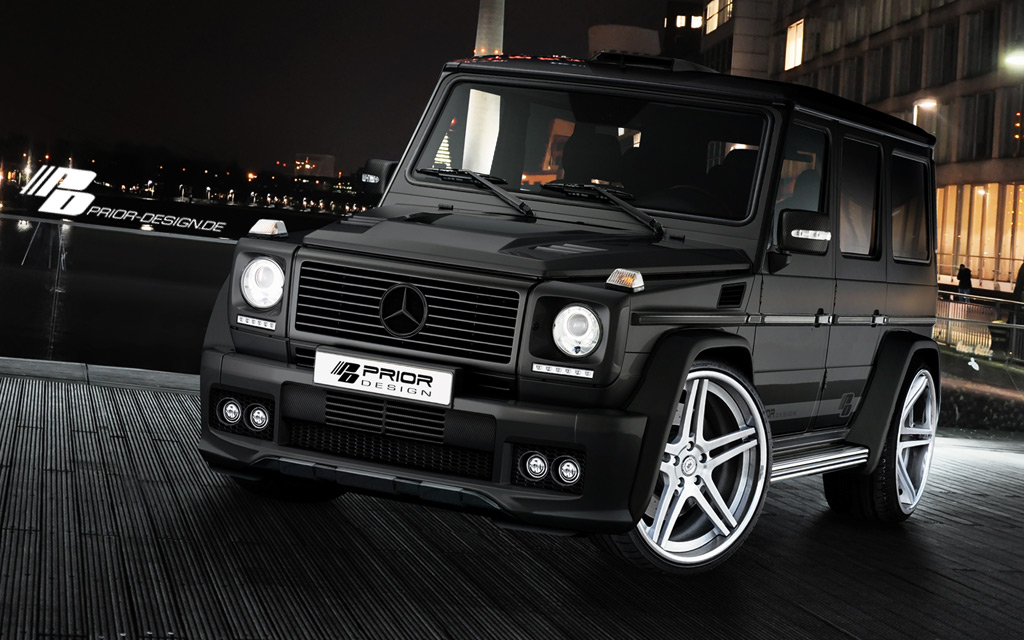
5. **2002-2008 Mercedes-Benz G500 ($53,200)**The Mercedes-Benz G-Wagon, specifically the 2002-2008 G500, is a vehicle that has “always been something of a desired taste.” Its “unabashed boxy styling” is instantly recognizable, making it look, to some, “like a delivery truck for some affluent gated community,” yet this distinctive design has become a hallmark of its enduring appeal. Tracing its roots “from a post-World War II military vehicle,” the G-Wagon has evolved into a symbol of rugged luxury. It has consistently “delivered the goods with regard to luxury appointments and its uncanny off-road prowess,” blending opulence with genuine capability.
The G500’s presence on this list highlights a broader trend: the increasing collectibility of robust, luxury SUVs. While “new models cost well into the $100,000 range,” older models in good shape are proving to be “relative bargains.” This provides an accessible pathway for collectors to experience the legendary G-Wagon without the prohibitive cost of a brand-new iteration. The inherent durability and robust engineering of these vehicles also make them excellent long-term propositions, capable of withstanding the test of time and continued use.
Hagerty’s data confirms this growing interest, noting that “prices of G-Class models from this era have increased by 12% over the past year.” This steady upward trajectory signals healthy demand and a recognized value proposition within the collector market. For those who appreciate a vehicle that combines uncompromising luxury with unparalleled off-road capability and a distinctive, timeless design, the 2002-2008 Mercedes-Benz G500 stands out. It’s more than just an SUV; it’s a statement, a testament to enduring design, and a smart acquisition for a diverse range of enthusiasts.
Having explored some of the current market’s most compelling high-value opportunities, our journey continues into Hagerty’s curated Bull Market list. We now turn our attention to six more models that offer a compelling blend of affordability, historical significance, and strong appreciation potential. These vehicles truly embody the evolving tastes of collectors and the dynamic nature of automotive investment, providing excellent entry points into the enthusiast world.
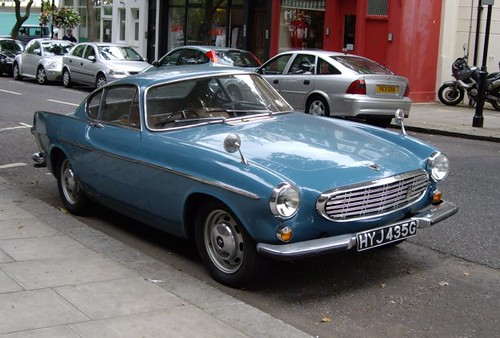
6. **1961-1972 Volvo P1800 ($44,200)**It’s not every day a Volvo makes headlines in the collectible car world, especially one renowned for conservatively cast sedans and wagons. Yet, the P1800 proudly breaks this mold, standing as the brand’s first bona fide sports coupe. This elegant machine delivered an “excellent touring vehicle” experience, wrapped in “sleek Italian-styled lines” that turned heads and established a new aesthetic benchmark for Volvo.
Its fame was further cemented by its prominent role in “The Saint” TV series during the same era, with Roger Moore himself behind the wheel. This pop culture association undoubtedly boosted its profile, transforming it from a mere car into a recognizable icon. Its distinctive appearance and historical narrative set it apart in a crowded field of more traditional sports cars.
Interestingly, Hagerty notes a fascinating trend: “Next Gen collectors are paying more for vintage P1800s these days than more-established collectors.” This signals a strong and sustained interest from a younger demographic, providing a robust indicator of its continued value appreciation. For those seeking a unique, stylish, and historically significant classic that isn’t from the usual suspects, the P1800 presents an intriguing and relatively accessible proposition at its $44,200 average value.
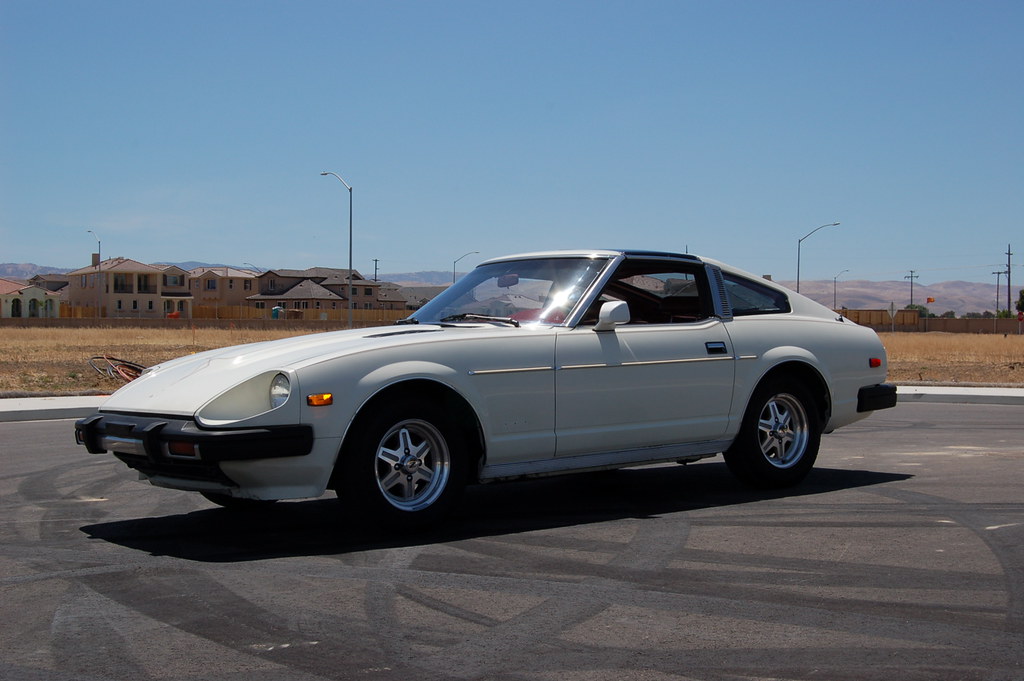
7. **1978-1983 Datsun 280ZX ($32,800)**The Datsun Z sports car lineage played a pivotal role in establishing Datsun, now Nissan, in the U.S. market, celebrated for its “comely styling and aggressive nature.” Known in its native Japan as the Fairlady, the Z series offered a blend of performance and design that resonated with a generation of drivers. The 280ZX, specifically from the 1978-1983 era, represents a unique chapter in this storied history.
As the Z model evolved, it transitioned from a pure sports car to “more of a softer grand touring model” by the late 1970s. This shift caused some purists to focus their attention and bank accounts on earlier, more performance-oriented iterations. Consequently, this has made the 280ZX from this specific model-year range a “far more-affordable proposition,” particularly appealing to younger collectors who appreciate its blend of style and accessible performance.
For those seeking an even more engaging experience, “Turbocharged versions are especially desirable,” offering enhanced power and a more spirited drive. The market for the 280ZX has shown remarkable resilience, with its “values having risen by 138% over the last half-decade.” Despite this impressive growth, Hagerty confidently believes “there’s still an opportunity for growth,” making the Datsun 280ZX a compelling investment for astute enthusiasts looking for a classic Japanese sports car with strong future potential at an average value of $32,800.
Car Model Information: 1980 Datsun 280ZX 10TH ANNIVERSARY
Name: Nissan S130
Aka: Datsun 280ZX,Nissan Fairlady Z
Caption: 1982 Datsun 280ZX 2+2 (Europe)
Class: Sports car
Manufacturer: Nissan
BodyStyle: fastback
Production: June 1978–1983
Layout: Front-engine, rear-wheel-drive layout
Assembly: ubl
Engine: Nissan L engine#L20,Straight-six engine
Transmission: Borg-Warner,Borg-Warner T-5 transmission
Predecessor: Nissan Fairlady Z (S30)
Successor: Nissan 300ZX#Z31
Weight: cvt
Wheelbase: cvt
Length: cvt
Width: cvt
Height: cvt
Categories: 1980s cars, All articles needing additional references, All articles with unsourced statements, Articles needing additional references from May 2018, Articles with short description
Summary: The Nissan S130 is a sports coupé produced by Nissan in Japan from 1978 until 1983. It was sold as the Datsun 280ZX, Nissan Fairlady Z and Nissan Fairlady 280Z, depending on the market. In Japan, it was exclusive to Nissan Bluebird Store locations. It was the second generation Z-car, replacing the Nissan Fairlady Z (S30) in late 1978. The 280ZX was the first time the “by Nissan” subscript was badged alongside the Datsun logo, along with Nissan trucks. The 280ZX was Motor Trend’s import car of the year for 1979. The 280ZX was replaced by the Nissan 300ZX in 1984.
Get more information about: Nissan Fairlady Z (S130)
Buying a high-performing used car >>>
Brand: Datsun Model: 280ZX
Price: $69,980 Mileage: 17,351 mi.
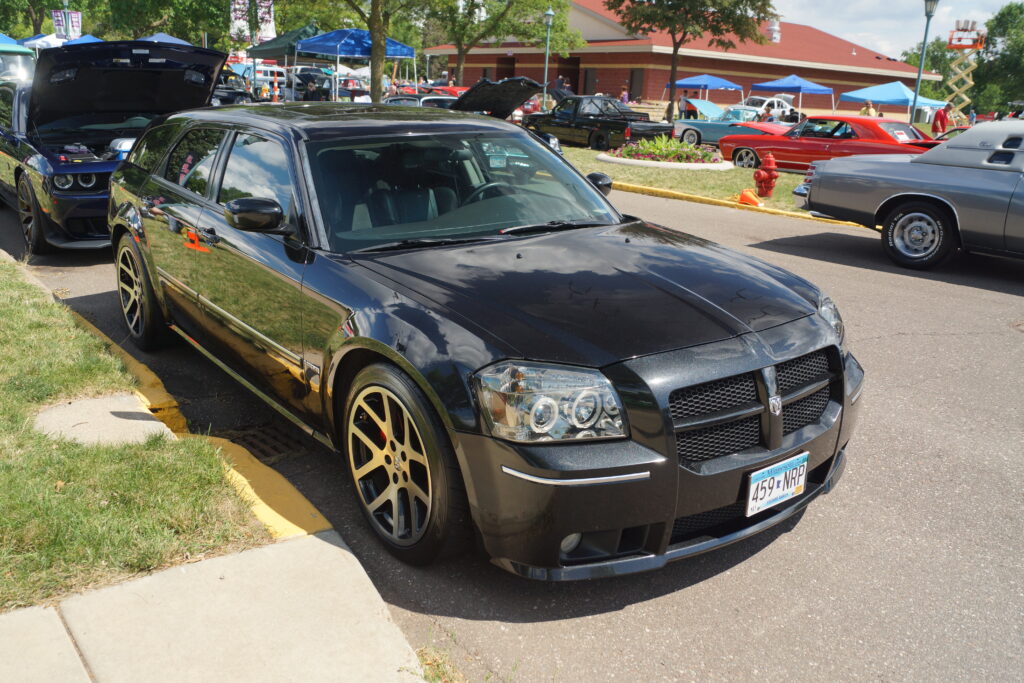
8. **2005-2008 Dodge Magnum SRT-8 ($32,600)**In an era when station wagons had largely become an afterthought in the U.S. market, Dodge dared to defy convention with the Magnum. This “rear-wheel-drive Magnum” was conceived as a “modern-day muscle car,” injecting much-needed excitement into a segment often overlooked. The ultimate expression of this vision was the top-tier SRT-8 version, boasting a formidable “425-horsepower V8-infused” engine that delivered exhilarating performance.
What truly sets the Magnum SRT-8 apart is its unconventional blend of practicality and raw power. It offered the utility of a wagon alongside the visceral thrill of an American muscle car, a combination rarely seen. This unique proposition, however, hasn’t deterred its ascent in the collector market. Despite experiencing a significant “39% jump in value since 2019,” Hagerty still considers this “unusually practical speedster” to be “relatively affordable” with ample “room for growth down the road.”
For collectors who appreciate bold styling, American performance, and a vehicle that stands out from the crowd, the 2005-2008 Dodge Magnum SRT-8 offers a compelling package. Its distinctive character and potent powertrain, coupled with its current average value of $32,600, make it a shrewd acquisition for those seeking a future classic that delivers both practicality and passion.
Car Model Information: 2006 Dodge Ram 1500 ST
Name: Dodge Magnum
Caption: 2008 Dodge Magnum SE, Stone White
Production: 1978–1979, 1979–1981,1981–1988, 2005–2008,
ModelYears: 1978–1979,1979–1981,1981–1988,2005–2008
Manufacturer: Chrysler Corporation
Categories: 1980s cars, 2000s cars, All articles with unsourced statements, Articles with short description, Articles with unsourced statements from August 2025
Summary: The Dodge Magnum is a nameplate used by several Dodge vehicles, at different times and on various markets. The name was first applied to a large Chrysler B platform-based 2-door coupe marketed from 1978 to 1979 sold in the United States and Canada. From the 2005 to the 2008 model years, the nameplate was revived for a Charger-based station wagon on the rear-wheel drive Chrysler LX platform, produced in Canada and sold on the American and Canadian market.
In Brazil, the Magnum was a top-of-the-line version of the local Dodge Dart, produced from 1979 to 1981.
In Mexico, the Dodge Magnum was a sporty rear-wheel drive two-door car based on Chrysler’s M-body (American Dodge Diplomat/Plymouth Gran Fury). From 1983 to 1988 Dodge marketed a sporty two-door K-car as the “Magnum”, with an available turbocharger engine from 1984 on.
Get more information about: Dodge Magnum
Buying a high-performing used car >>>
Brand: Dodge Model: Magnum
Price: Not Priced Mileage: 148,812 mi.
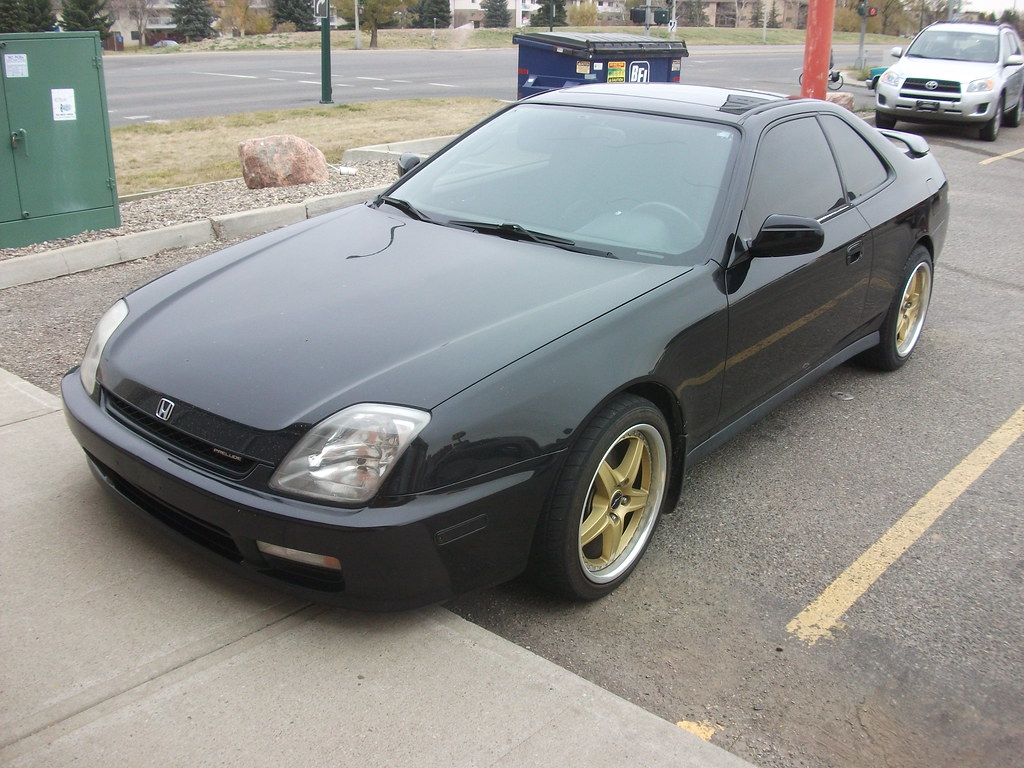
9. **1997-2001 Honda Prelude ($17,400)**The Honda Prelude, particularly the fifth-generation models from 1997-2001, distinguishes itself as a “more-sophisticated sports coupe” in a landscape often dominated by aggressive contenders. It was a vehicle that pushed technological boundaries for its time, incorporating “then-novel features like torque-vectoring steering” that enhanced its handling dynamics and driving appeal. This commitment to engineering excellence defined its character.
Its position as an “up-and-comer among enthusiasts 13 years younger than the average collector” highlights a significant generational shift in the market. These younger enthusiasts, who were coming of age when this Prelude was fresh from the factory, are now gravitating towards the cars they aspired to in their youth. This personal connection often translates into sustained demand and value appreciation.
With an average value of $17,400, the Honda Prelude offers an incredibly accessible entry point into the world of collectible coupes. Its blend of refined styling, innovative technology, and growing appeal among the next generation of collectors makes it a smart choice for those looking to invest in a Japanese classic that promises both an enjoyable driving experience and a strong likelihood of future appreciation.
Car Model Information: 2001 Honda Prelude Base 2dr Coupe
Name: Honda Prelude
Caption: 1998 Honda Prelude VTi (BB6) in the UK
Manufacturer: Honda
Production: November 1978 – October 2001,2025–present
Class: Sport compact car
Layout: Front-engine, front-wheel-drive
BodyStyle: liftback,coupe
Assembly: Sayama, Saitama
Predecessor: Honda 1300#Honda 145
Categories: 1980s cars, 1990s cars, 2020s cars, All articles lacking reliable references, All articles needing additional references
Summary: The Honda Prelude (Japanese: ホンダ・プレリュード, Hepburn: Honda Pureryūdo) is a sport compact car produced by the Japanese company Honda. It was produced over five generations from 1978 to 2001, and reintroduced in 2025.
For the first five generations, as a two-door coupe loosely derived from the Accord, the Prelude was the first Honda to feature a moonroof, a feature that remained standard equipment throughout its production.
The Prelude was used by Honda to introduce the Japanese Honda retail sales chain Honda Verno, with the international release of the model following shortly after. The Prelude’s manufacture concluded in 2001 on introduction of the fourth-generation Integra. The Prelude name was originally trademarked by Toyota, but was amicably given to Honda for use.
The Prelude’s nameplate aligned with a series of music-themed nameplates in use by Honda, including the Accord, Quintet, Concerto, Jazz, and Ballade.
Get more information about: Honda Prelude
Buying a high-performing used car >>>
Brand: Honda Model: Prelude
Price: $18,975 Mileage: 38,734 mi.
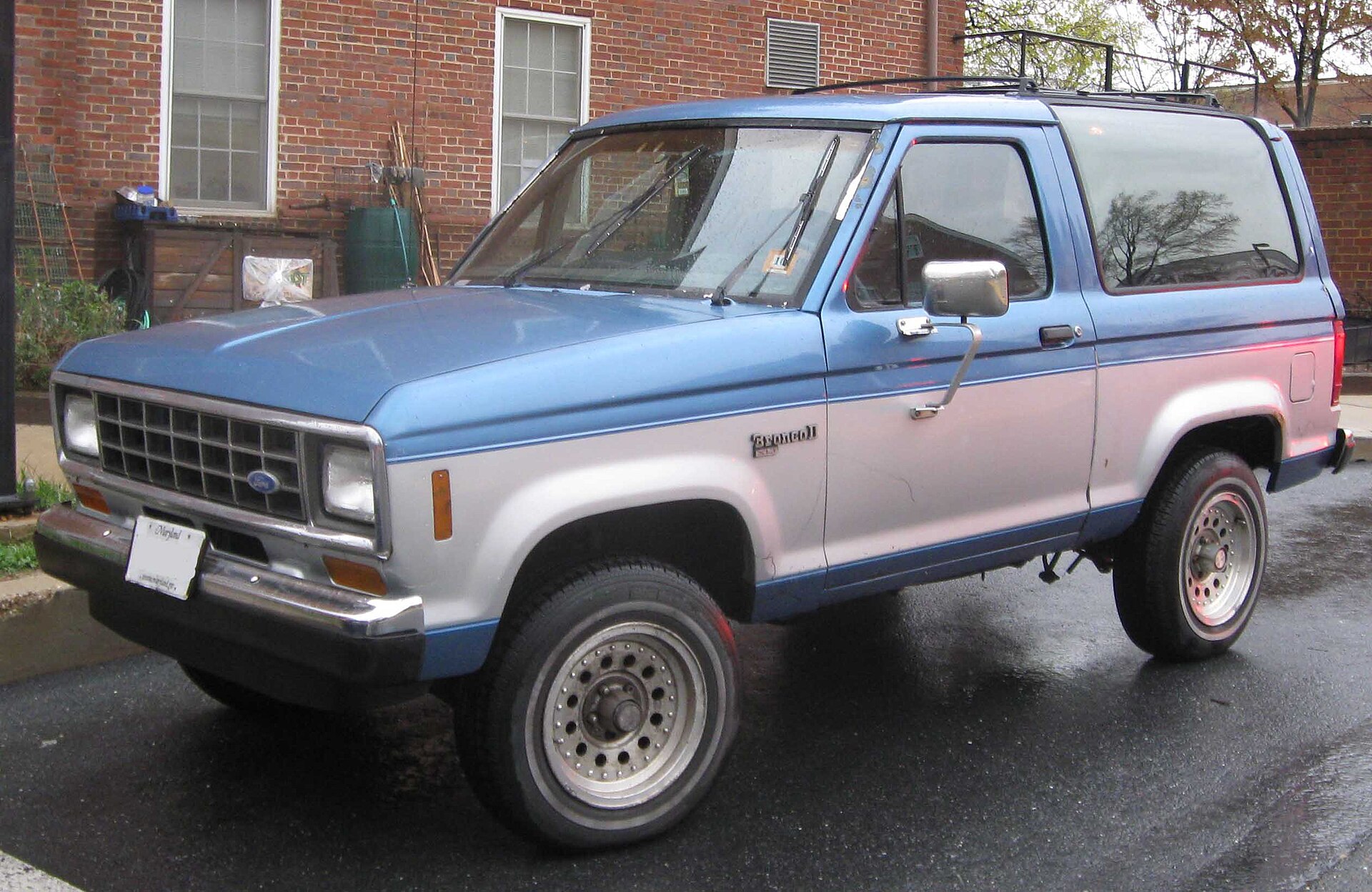
10. **1984-1990 Ford Bronco II ($15,600)**The resurgence of the Ford Bronco nameplate in recent years has drawn renewed attention to its predecessors, and the 1984-1990 Ford Bronco II is no exception. This incarnation was presented as a “three-door wagon” and served as the precursor to the wildly popular Ford Explorer, occupying a significant place in the evolution of Ford’s SUV lineup. Its rugged, compact design provided an appealing alternative in the utility vehicle market.
Crucially, this particular generation of Bronco is proving especially attractive to “Gen Z and Millennial enthusiasts,” primarily due to its “low cost of entry.” In an environment where many classics are becoming financially prohibitive, the Bronco II offers an attainable slice of automotive history. This accessibility, combined with the general popularity of vintage SUVs as “rough-and-tumble alternatives to Jeep Wranglers,” fuels its growing collectibility.
Hagerty’s analysis indicates that the Bronco II’s “sustained demand shouldn’t keep them this affordable for much longer,” predicting continued appreciation. For those seeking a classic SUV with undeniable character, off-road heritage, and strong appeal to a younger demographic, the 1984-1990 Ford Bronco II, with an average value of $15,600, stands out as a savvy investment.
Car Model Information: 2024 Mazda CX-5 2.5 S Carbon Edition
Name: Ford Bronco II
Caption: 1983–1988 Ford Bronco II XLT
Manufacturer: Ford Motor Company
ModelYears: 1984–1990
Production: January 1983 – January 1990
Assembly: Louisville, Kentucky
Class: Compact SUV
Related: Ford Ranger (Americas)
Layout: Front-engine, rear-wheel-drive layout,rear-wheel drive
Engine: Ford Cologne V6 engine#2.8,Ford Cologne V6 engine#2.9,Mitsubishi Motors
Transmission: Manual transmission,Mazda,Mazda,Mazda,Mitsubishi Motors,Mitsubishi Motors,Automatic transmission,Ford C4 transmission#C5,Ford C3 transmission#A4LD
Wheelbase: 94.0 in
Abbr: on
Length: 1983–1988: {{convert,158.3,in,mm,0,abbr=on
Width: 68.0 in
Height: 1983–1988: {{convert,68.2,in,mm,0,abbr=on
Successor: Ford Explorer#Ford Explorer Sport (1991–2003)
BodyStyle: 3-door wagon
Categories: 1990s cars, All-wheel-drive vehicles, Articles with short description, CS1 French-language sources (fr), Cars discontinued in 1990
Summary: The Ford Bronco II is a compact sport utility vehicle (SUV) that was manufactured by the American manufacturer Ford. Closely matching the first-generation Ford Bronco in size, the Bronco II was sold for the 1984 to 1990 model years, alongside the third and fourth generations of Ford’s full-size Bronco. Derived from the Ford Ranger compact pickup truck, the Bronco II was produced in a single generation as a three-door wagon only, competing against the three-door version of the Jeep Cherokee introduced the same year, and the compact Chevrolet S-10 Blazer and GMC S-15 Jimmy which GM had launched as smaller, similar-named SUVs alongside their full-size Blazer and Jimmy a year prior.
For the 1991 model year, Ford replaced the Bronco II with a larger but still Ranger-derived SUV, the mid-size Explorer. Alongside a three-door wagon, a five-door version was also built to better meet consumer demands. Ford’s next compact SUV was the 2001 Escape, available only as a five-door. Ford did not release another three-door SUV until the 2021 mid-size Bronco.
The Bronco II was assembled alongside the Ford Ranger in the Louisville Assembly Plant in Louisville, Kentucky from January 1983 to January 1990.
Get more information about: Ford Bronco II
Buying a high-performing used car >>>
Brand: Ford Model: Bronco II
Price: $25,958 Mileage: 26,006 mi.
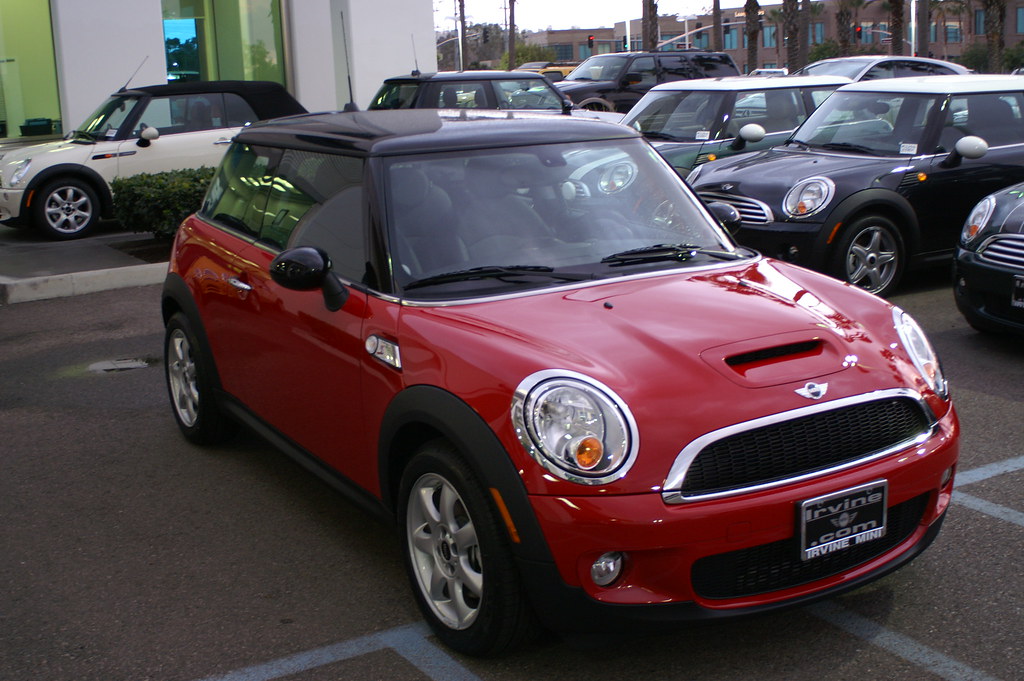
11. **2002-2006 Mini Cooper S ($12,000)**Bringing our list to a close is the “least-expensive budding collectible” identified by Hagerty: the 2002-2006 Mini Cooper S. This first generation of the reimagined Mini Cooper, a product of BMW’s stewardship, successfully captured the essence of its iconic predecessor while introducing modern engineering. It has “endured for its classic styling, amenable performance and overall quirkiness,” establishing itself as a beloved modern classic.
Despite its undeniable charm and engaging driving dynamics, the modern-day Mini has “remained relatively cheap” in the vintage-car market. Hagerty notes that its “average price in the vintage-car market having creeped up by only 4% in recent years,” making it an apparent bargain compared to many other appreciating assets. This makes it an incredibly appealing option for new collectors seeking an affordable yet distinctive vehicle.
Hagerty’s experts, however, are quick to point out that the Mini Cooper S’s “value and desirability makes its bargain pricing too attractive to last.” Its enduring appeal, coupled with its enthusiastic community and historical significance, suggests that its current average value of $12,000 is ripe for upward movement. It represents a delightful and accessible entry point for anyone looking to enjoy and invest in a truly iconic, fun-to-drive collectible.
Beyond these specific models, the broader narrative of the classic car market reveals crucial shifts in how automotive heritage is valued and preserved. As the traditional demographics of collectors evolve, new interests are emerging, shaping the landscape of future collectibles and demanding innovative approaches to safeguarding these rolling pieces of history.
Indeed, a significant trend is the evolving generational interest in classic cars. Brian Rabold, Hagerty’s Vice President of Automotive Intelligence, states, “It’s clear that younger enthusiasts are increasingly entering the collector car market, and vehicles from their eras are appreciating. It’s official, 1980s, 1990s and 2000s era cars are collectible.” This is supported by a Hagerty survey showing “nearly 60% of Gen Z respondents said they’d like to own a collector’s car, compared to 31% of Baby Boomers.” This suggests a profound shift in what defines a ‘classic’ and who cherishes it.
However, this new wave of collectors often faces different economic realities. Generation X, for instance, carries more debt than any other age group, while millennials contend with significant student loan debt. As Rupert Banner of Gooding & Company observes, these new buyers are “migrating towards cars that are easiest for them to understand or relate to,” specifically “the cars that they aspired to in the last 15 to 20 years as they developed their wealth.” This explains the growing appeal of more recent models, often at more accessible price points, as opposed to the traditional ‘pre-war favorites’ cherished by older generations.
Addressing the “vanishing” aspect of classic cars also involves navigating legislative changes and embracing new preservation strategies. While the EU and California’s ban on the sale of new gas-powered cars by 2035 has sparked concerns among collectors, vintage car owners “do not need to worry since the laws do not prohibit the sale or use of older vehicles on the roads.” However, an indirect effect could be the need to “make their classic cars more eco-friendly,” potentially through electric powertrain conversions, which many owners are already undertaking.
Expert advice consistently emphasizes careful consideration before investment. Factors such as a classic car’s exclusivity (how many were produced, its rarity), vehicle condition (well-maintained), originality (restored vs. modified), and historical value (racing history, design legacy, celebrity ownership) are paramount. Documentation with a direct paper trail, original equipment, and low mileage are critical for maximizing value, helping collectors avoid the pitfalls of a “handyman’s special” that requires extensive and costly restoration.
Ultimately, the future of classic cars hinges on adapting to these shifts and actively engaging in their preservation. McKeel Hagerty wisely advises, “Nothing is totally immune, but the best bet has always been to buy what you love.” He adds, “Driving and enjoying a great car is a great way to hedge an automotive investment.” Strategies like regular maintenance, reducing vehicle loads, and using premium gasoline are practical ways for owners to reduce emissions, making their classics more relevant in a greener world.
Car Model Information: 2024 Mazda CX-5 2.5 S Carbon Edition
Sp: uk
Caption: 1959 Morris Mini-Minor (first one built)
Name: Mini
Aka: Austin 850,Rover Mini,Austin Cooper,Austin Mini,Austin Partner,Austin Seven,Innocenti Mini,Leyland Mini,Morris 850,Morris Mascot,Morris Mini Minor,Riley Elf,Wolseley 1000 (South Africa),Wolseley Hornet
Layout: Front-engine, front-wheel-drive layout
Manufacturer: British Motor Corporation,British Leyland,Rover Group
Production: 1959–2000 (5.38 million)
Class: City car
BodyStyle: sedan (car),convertible,Station wagon,sedan delivery,coupe utility
Engine: BMC A-series engine,Straight-four engine
Designer: Alec Issigonis,John Sheppard (car designer)
Transmission: 4-speed manual,AP automatic transmission,5-speed manual (optional extra on some later models)
Length: cvt,cvt,cvt
Width: cvt
Height: cvt
Weight: cvt
Wheelbase: cvt,cvt
Related: Mini Moke,Austin Metro,Innocenti Mini,Mini Wildgoose,Mini Marcos
Successor: Austin Metro,Mini Hatch
Assembly: Panmure, New Zealand
Categories: 1960s cars, 1970s cars, 1980s cars, 1990s cars, 2000s cars
Summary: The Mini is a very small two-door, four-seat car, produced for four decades over a single generation, with many names and variants, by the British Motor Corporation (BMC) and its successors British Leyland and the Rover Group, and finally (briefly) under BMW ownership. Minis were built as fastbacks, estates, convertibles, and various other body styles. Minus a brief 1990s hiatus, from 1959 into 2000, an estimated 5.38 million of all variations combined were built, and the Mini’s engines also powered another 2 million Mini Metros, though the Mini eventually outlasted its successor.
Initially, the Mini was marketed under the Austin and Morris names, as the Austin Seven and Morris Mini-Minor; the Austin Seven was renamed Austin Mini in 1962 and Mini became a marque in its own right in 1969. Retrospectively, the car is known as the “Classic Mini” to distinguish it from the modern MINI family of vehicles produced since 2001 by German carmaker BMW, who took ownership of the Mini name following the sale of Rover Group in 2000.
This distinctive two-door car was designed for BMC by Sir Alec Issigonis. Its space-saving transverse engine and front-wheel drive layout – allowing 80% of the area of the car’s floorpan to be used for passengers and luggage – influenced a generation of car makers. The front-wheel-drive, transverse-engine layout were used in many other “supermini” style car designs such as Honda N360 (1967), Nissan Cherry (1970), and Fiat 127 (1971). The layout was also adapted for larger subcompact designs. In 1999, the Mini was voted the second-most influential car of the 20th century, behind the Ford Model T, and ahead of the Citroën DS and Volkswagen Beetle. It is also considered an icon of 1960s British popular culture.
The Mini Mark I had three major UK updates: the Mark II, the Clubman, and the Mark III. Within these was a series of variations, including an estate car, a pick-up, a van, and the Mini Moke, a jeep-like buggy. The performance versions, the Mini Cooper and Cooper “S”, were successful as both race and rally cars, winning the Monte Carlo Rally in 1964, 1965, and 1967. The Mini was manufactured in England at the Longbridge plant in Birmingham located next to BMC’s headquarters and at the former Morris Motors plant at Cowley, as well as in Australia (Victoria Park/Zetland BMC Australia factory) and later also in Spain (Authi), Belgium, Italy (Innocenti, as the Innocenti Mini), Chile, Malta, Portugal, South Africa, Uruguay, Venezuela, and Yugoslavia (IMV). In 1980, British Leyland launched the Mini’s follow-up, the Austin Metro, however the Mini outlasted it and continued to be produced at Longbridge until October 2000.
Get more information about: Mini
Buying a high-performing used car >>>
Brand: Mini Model: Cooper S
Price: $25,958 Mileage: 26,006 mi.
As Mark Connelly, a passionate historian and classic car enthusiast, eloquently puts it, these vehicles are “prisms of the past,” reflecting “the development of anything that’s part of our past.” While he acknowledges the market’s “very grey-haired” demographic and the potential for a “flooded market,” the sentiment from dealers like Bill Neff remains optimistic: “One word: Style.” Neff assures us that “the cars will be looked at from a historical perspective, and the cars will be, too. They’re certainly not going to the junkyard.” The classic car market, far from vanishing, is simply evolving, inviting a new generation to discover and cherish the timeless artistry and profound history encapsulated in these magnificent machines.

